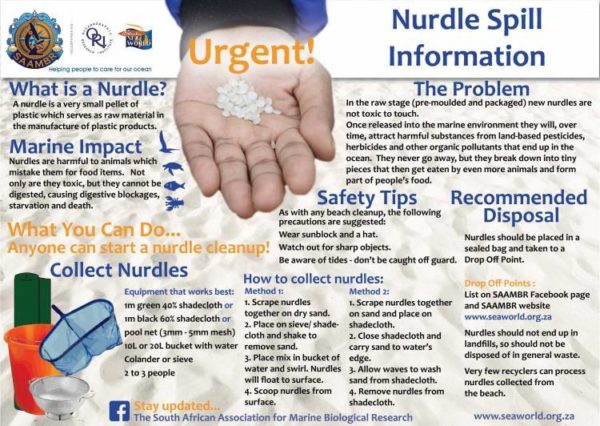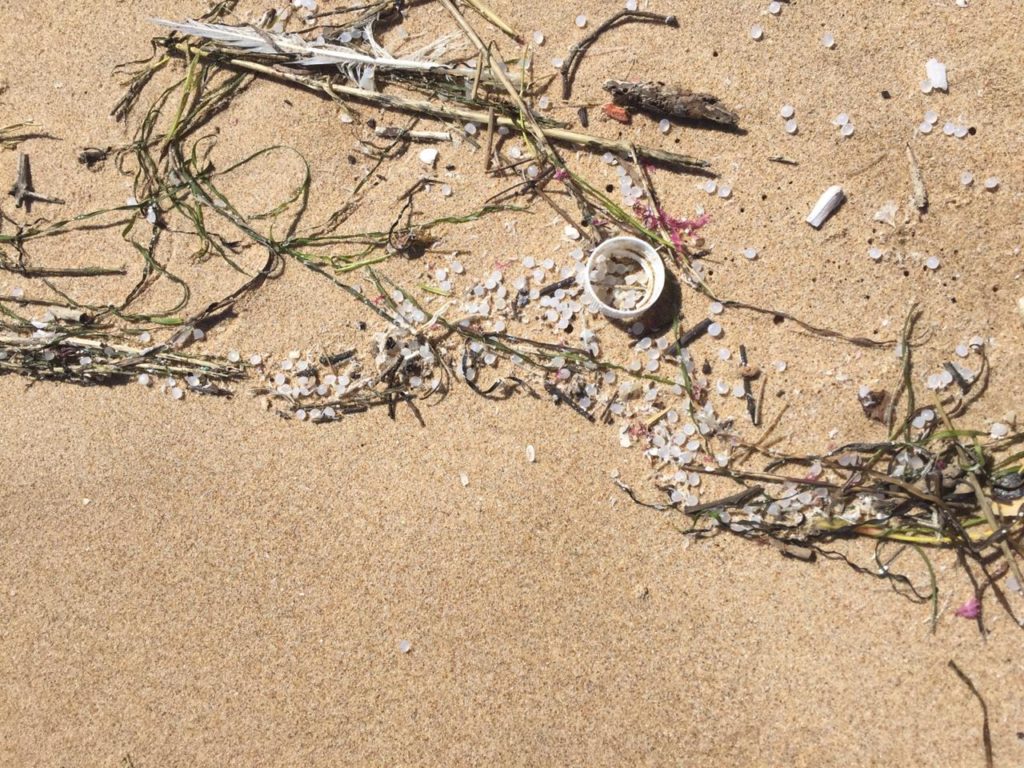A large amount of nurdles have washed up on beaches along the South Peninsula recently. These tiny beads of virgin plastic can be harmful toward the environment, and locals were encouraged to clean them up as much as possible.
Nurdles were discovered on Muizenberg, Fish Hoek, Simonstown, Millers Point, Witsands, and Kommetjie.
Following an investigation, the City of Cape Town’s Environmental Management Department found that the nurdles may have been part of a container that was lost at sea, according to the Muizenberg Improvement District.
“It is suspected that a container (s) of nurdles was lost at sea near Plettenberg Bay. With the South East winds these are making landfall in large numbers in False Bay,” reads a recent update.
“The City is working with the Shark Spotters and the Beach Co-Op in an ongoing clean up. The public is asked to drop any collected nurdles at the Muizenberg Shark Spotters office or with the Shark Spotter on duty at Fish Hoek. The collected nurdles will be recycled.
“Beaches most heavily hit by nurdles are Fish Hoek, Glencairn and Buffelsbay in Cape Point. The City is trying to make more cleansing staff available,” they added.
When taking a walk on the beach, please keep your eyes peeled for nurdles. They are tiny – around 2-5mm, which make it difficult to spot them. It is also quite difficult to pick them up and therefore it helps to take a sieve and container or packet with you.
Once collected, please do not discard them in the waste bins provided at the beaches, as these pellets will end up in landfills where they will become a problem to the scavenger animals that look for food. Rather, dispose of collected nurdles at a designated drop-off point. Find your nearest drop-off point on www.seaworld.org.za.

Nurdles are tiny beads of plastic that are melted down and injection moulded to make a variety of new plastic products. Tiny, persistent and potentially toxic, these nurdles resemble fish eggs and are thus made more attractive to marine life.
Like other plastics, nurdles can easily be mistaken for food by marine wildlife like seabirds, fish and crustaceans. They thus post a threat to these animals and their habitats.
“More than 220 marine species have been shown to ingest plastic debris. Plastic can get trapped in an animal’s stomach causing ulceration, making them feel full and stopping them eating real food,” reports Nurdle Hunt.org.
“This can lead to starvation and potentially death. Toxic chemicals can also transfer from microplastic to animals that eat them, causing further harm – another route for these chemicals to enter the food chain.”
These nurdle pellets may also indirectly affect the ecosystem, as microplastics can change the characteristics of sand, such as its temperature and permeability, which can affect animals like sea turtles that incubate their eggs on beaches.
Picture: Facebook / DBC / DBB – Dana Bay Conservancy / Danabaai Bewarea






